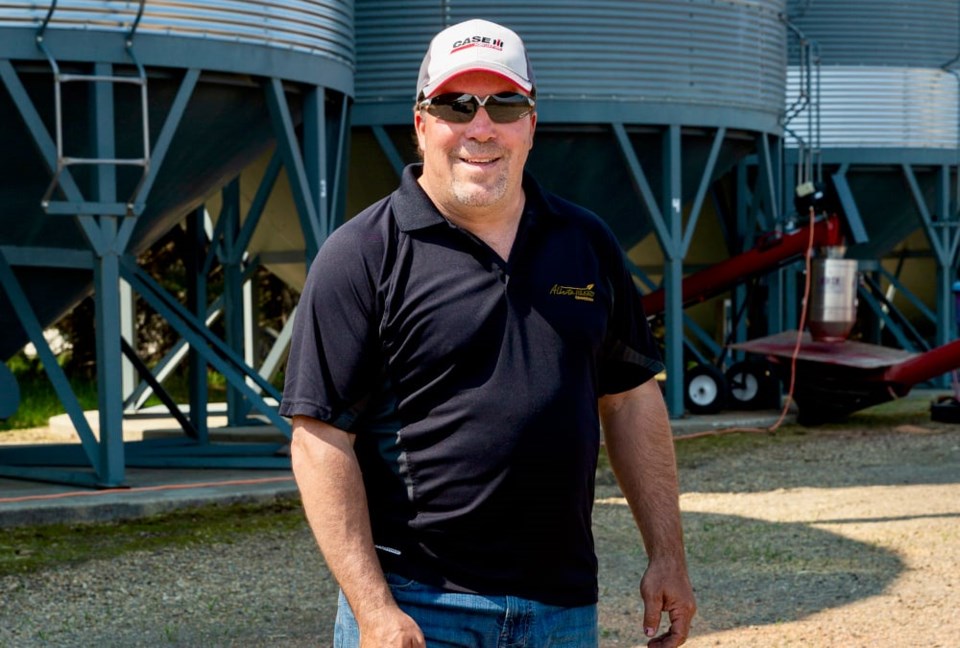There may not be such a thing as free cash, but an interest-free loan of up to a quarter-million dollars may be the closest thing to it.
Administrators of the federal Advance Payments Program say they’ve seen a big jump in applications since the interest-free portion of the loan was increased to $250,000 (from $100,000 previously) earlier this year.
For Jason Lenz, it couldn’t have come at a better time.
“Consider how much our input prices have increased. Fertilizer in particular is well over double what we would normally pay over the last five or 10 years,” said the Bentley-area grain producer.
“There is probably no better time to apply than now because this year’s crop was by far the most expensive crop we’ve ever grown as far as putting dollars into the ground.
“Having this program just gives you so much flexibility. I can buy my inputs for the next year at the right time or take advantage of some of the price opportunities that always happen in the fall.”
Lenz is not alone.
The Canadian Canola Growers Association, one of 30 administrators of the program, has received about 8,000 applications so far this year, roughly 1,000 more than last year at this time, the farm group’s director of finance and operations said on November 21.
The size of loans has also gone up, said Dave Gallant.
“Last year the average advance was $187,000,” he said. “This year, before the [interest] announcement, it was at $230,000. Today it’s hovering around $256,000.”
His organization has already loaned $2 billion so far and there are still four months left in the program year, said Gallant.
“A normal year for us would be $1.6 billion,” he said. “This year, depending on how farmer sign-up continues, over the next couple of months we could finish off at $2.2 billion or $2.3 billion.”
The jump in applications has been even higher on a percentage basis at FarmCash, a division of Alberta Wheat.
About $60 million has been loaned to 319 producers so far this year, putting FarmCash on track to double last year’s total loans of $37 million to 196 producers.
“During this time of high interest rates it’s becoming more imperative for producers to use low-interest financing tools,” said Syeda Khurram, chief operating officer of FarmCash.
“This is really helping them improve their bottom lines and giving them access to more cash flow to help them recover from last year’s drought and ongoing inflation.”
Loans of up to $1 million
The Advance Payments Program allows farmers to get a low-interest loan of up to $1 million covering half of the market value of eligible agricultural products (including grain, livestock, produce and honey) that are pledged as security. The interest rate for most administrators of the program is typically less than the prime rate, with many offering prime minus 0.75 per cent.
Only about a quarter of Alberta producers have applied for a cash advance loan, said Khurram.
“Clearly there is work to be done,” she said. “There needs to be awareness for producers because it helps them.
“There has been some feedback where they’ve said, ‘I wish I was aware of this program before. I wish I would’ve had somebody to talk to who knew how to use it.’”
Advances are repaid as farmers sell their production, with up to 18 months allowed to fully repay the advance for most commodities, and up to 24 months for cattle and bison. The $250,000 interest-free portion will stay in place throughout the 2022 and 2023 program years.
Ottawa picks up the tab for the interest-free portion, as well as guaranteeing the loan, but doesn’t put any strings on how the money is used.
Although the interest-free portion of the loan was increased to help producers fight the rising costs of fuel, fertilizer and seed, it can be used for virtually anything, Khurram said.
“As long as you’re an agricultural producer, you can apply for up to $1 million, and as long as you meet the criteria of payment timelines, you can use it wherever you want to.
“The federal government is not asking producers to do a report on where the advance is being used, so it could be anywhere on their farming operations.”
When it raised the interest-free portion in June, the government estimated borrowers would save an average of $5,500 in interest.
The prime rate has gone up since then. It was 3.7 per cent in June and has since risen to 5.95 per cent, with a further hike likely in December, 2022. When it upped the interest-free portion in June, the government estimated it would cost $61 million over two years.
Simple application
Applying for a cash advance is simple, said Lenz, noting he received his loan three days after submitting his application.
“It’s just so easy to do,” he said. “Having those loan dollars in place allows me to sell my grain when I want to rather than when I need to. It’s saying that I can maybe wait for better pricing opportunities other than needing to sell to create some cash flow for my farm.”
Additional security is required for advances on products that are either in production or non-storable, as well as for loans where the security is animals or animal products. This can include potential proceeds from a risk management program such as AgriInsurance or AgriStability.
Because the advance is considered a loan, it is not deemed income for tax purposes.
The program distributed $2.4 billion in advances last year to 17,430 producers across the country. That number is bound to increase sharply this year.
“I suspect the overall program across Canada will now be closer to $3 billion to $3.2 billion,” said Gallant.
A list of cash advance administrators, as well as their administration fees and rates on the interest-bearing portion of the loans, can be found at the Government of Canada website.



